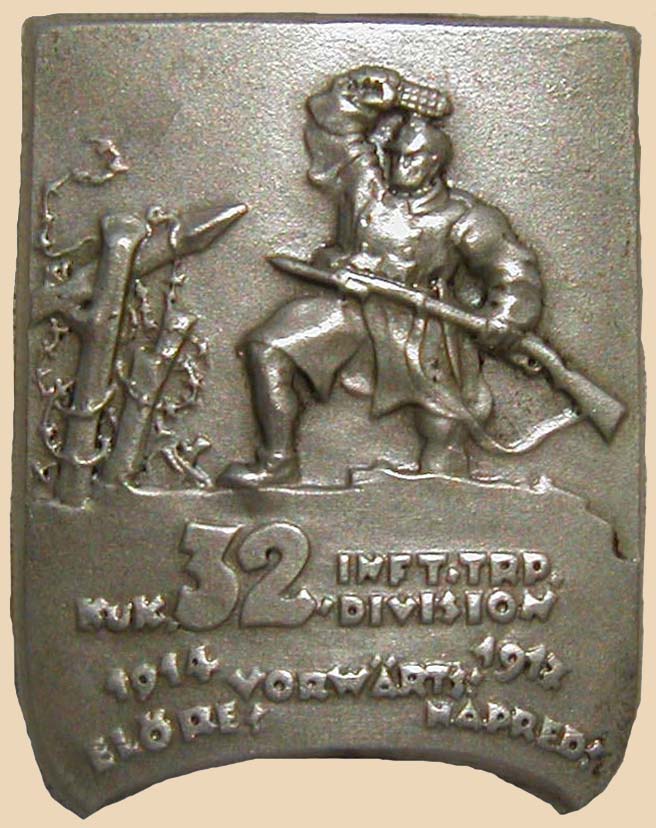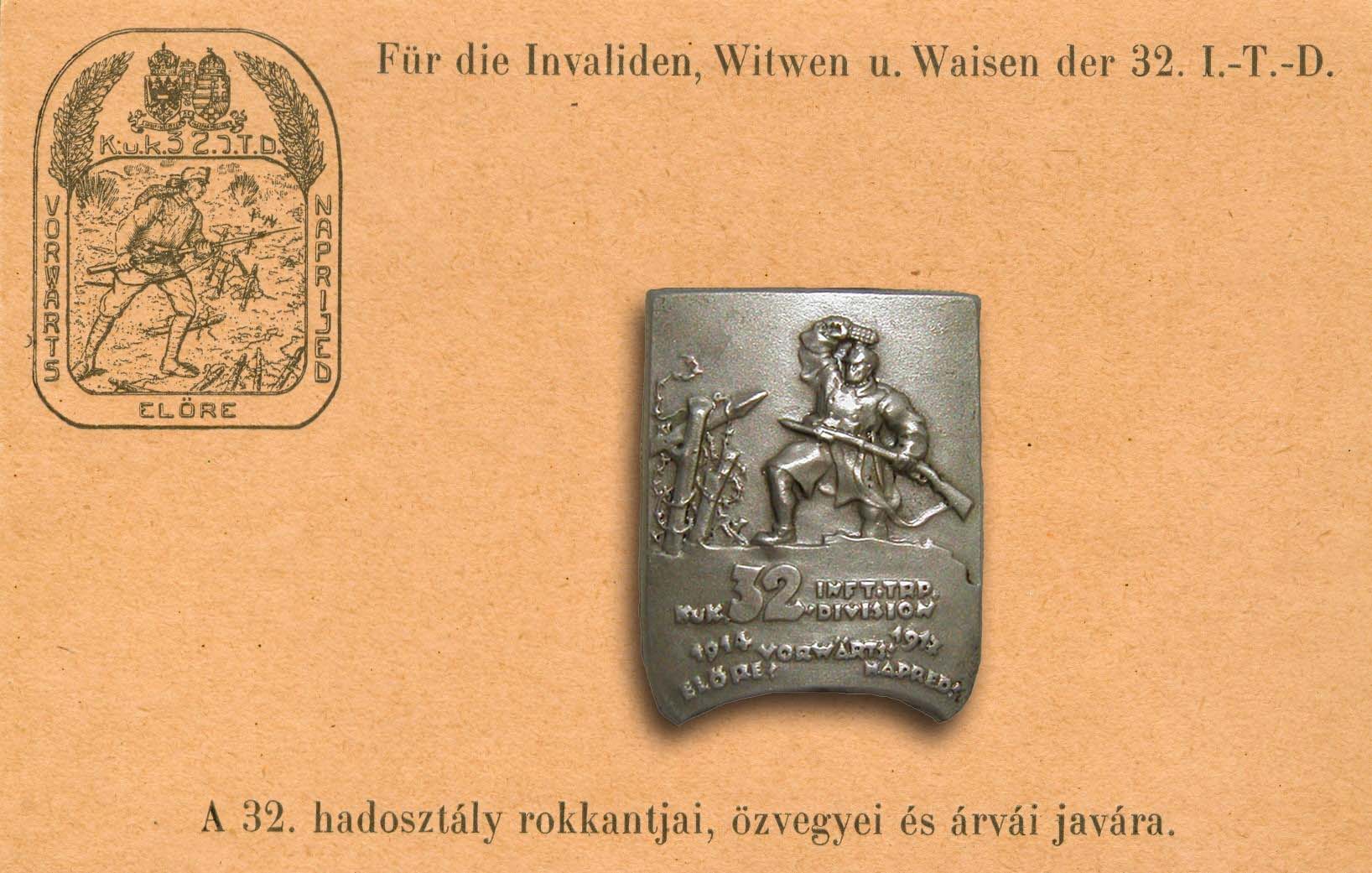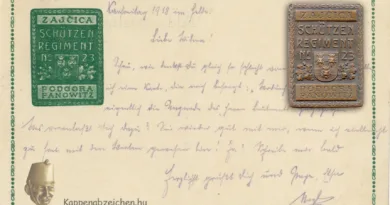ITD 32
This post fits in the line where I present images that represent unrealized, designed badges. Most recently, we saw a drawing of the beautiful enamel badge of the 1st Infantry Regiment on a postcard. Now the 32nd Division badge plan is on the agenda.
It is interesting to compare this with the existing badge of the division. The motifs of the two badges are the same, but the representation is very different. I think the realized badge is much more shocking. In front of the grenade thrower, the obstacle system is much scarier. The similar obstacles in the drawing are in a state of destruction. The inscriptions on the two badges are the same, except for the year numbers. According to the date of the finished badge, it was made in 1917. Unfortunately, the card is unwritten, with no date on it, as it is on the badge drawing. Nevertheless, I believe that it may have been made sometime in 1917, and in any case before the completed badge. The high degree of similarity between the two badges suggests this: presumably the better badge design was chosen, but the other design was also used to decorate the card.

The 32nd Division included the common regiments of the southern part of the Hungarian Great Plain. The headquarters were in Budapest. Its crew was mixed according to the ethnic composition of the area. The 23rd and 86th regiments had mostly Hungarian staff, the 70th and 6th infantry regiments had mostly Serbian and Croatian soldiers. All of them also had a significant percentage of native German speakers.
The division was deployed first on the Serbian front and then in Galicia. They took part in averting the Russian attack in Bukovina at the turn of 1915-16. In the summer of 1916, they were assigned to the German Southern Army. They also had to retreat because of a break in the front line, although they successfully defended themselves from Russian attacks. In 1917 they took part in the liberation of Tarnopol. In 1918, this division was also involved in the attack on Montello.





In 1918 this division was part of XXVI Korps and fought on Monte Grappa massif. The division that took part in the fighting on Montello was the 31.